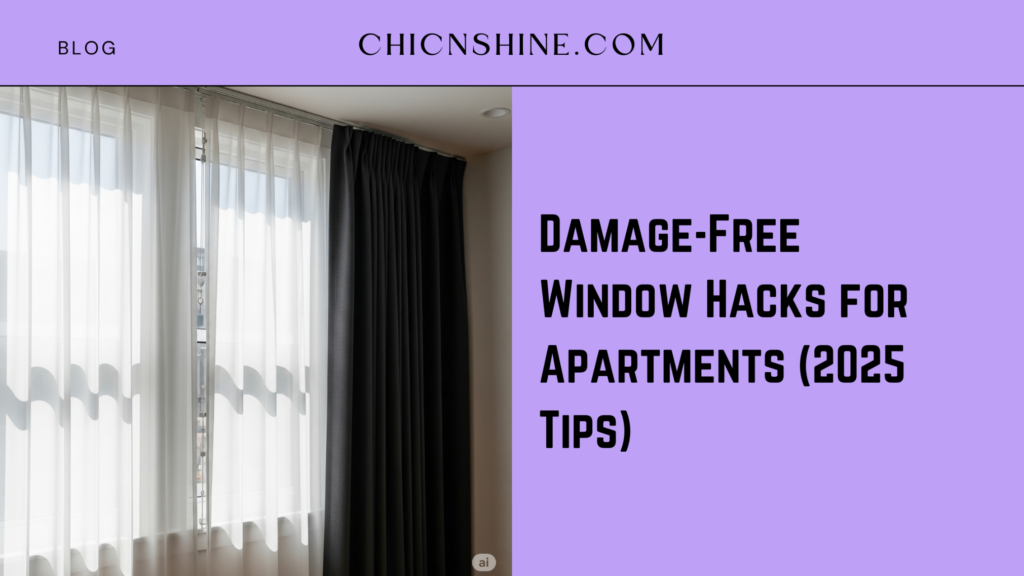Last year, I nearly lost my entire security deposit because of tiny holes left by curtain rods in my previous apartment. Despite what I thought were barely noticeable marks, my landlord charged me $200 for “wall damage repair” and painting. That expensive lesson taught me the crucial importance of finding no-renter’s drill curtain solutions that work without compromising the integrity of apartment walls or window frames.
Since then, I’ve become obsessed with discovering damage-free methods for hanging curtains in rental properties. Through extensive testing in my apartment and helping friends solve similar challenges, I’ve identified seven proven techniques that provide excellent results without risking your deposit. These methods have saved me hundreds of dollars in potential damage fees while giving me the privacy and light control I need for comfortable living.
What makes these solutions particularly valuable is their versatility across different apartment types and window configurations. Whether you’re dealing with standard double-hung windows, awkward corner placements, or unusual architectural features, I’ve found adaptable approaches that work without requiring any permanent modifications to your rental space.
Understanding the Real Costs of Traditional Curtain Installation
Before diving into damage-free alternatives, I want to emphasise why no-renter drill curtain solutions are essential for anyone living in rental properties. The financial implications of traditional curtain rod installation extend far beyond the initial holes drilled into walls. When you move out, landlords often charge for spackling, sanding, priming, and repainting entire wall sections, even for small holes.
Through my research and personal experience, I’ve discovered that the average cost of repairing curtain rod damage ranges from $150 to $400 per room, depending on your location and the landlord’s chosen contractors. This doesn’t include the time and stress involved in deposit disputes, which can drag on for months and affect your credit if not resolved properly.
Moreover, traditional installation methods often create problems that aren’t immediately apparent. Drilling into walls can hit electrical wires, plumbing, or structural elements, leading to expensive repairs that you’ll be responsible for. Even seemingly simple installations can cause paint chips, cracks, or damage to drywall that expands over time, creating larger problems than initially anticipated.
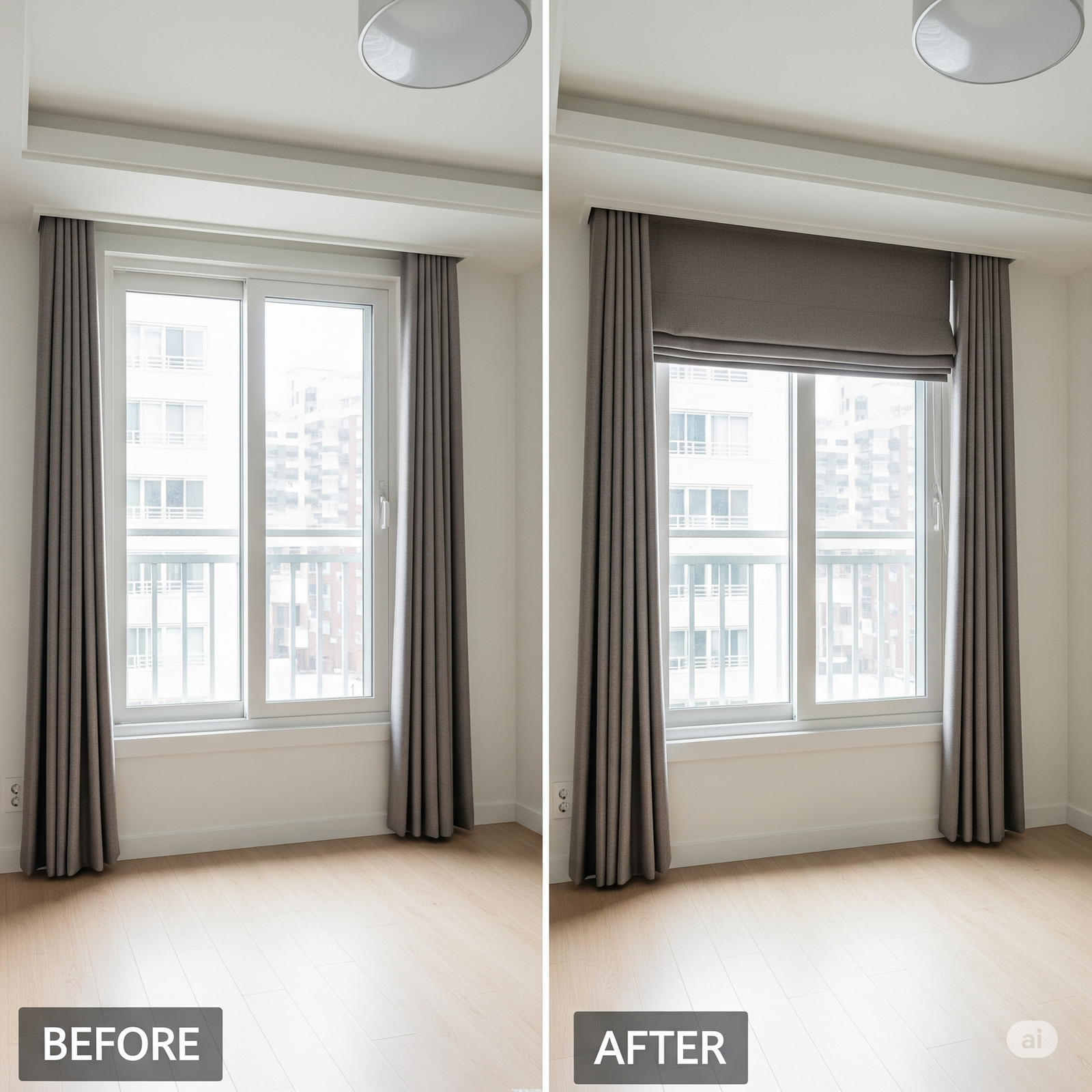
The Tension Rod Revolution: My Go-To Solution
Among all the no-renter’s drill curtain solutions I’ve tested, tension rods have proven to be the most reliable and versatile option for most apartment windows. However, not all tension rods are created equal, and I’ve learned specific techniques that maximise their effectiveness while ensuring they won’t damage window frames or surrounding walls.
The key to successful tension rod installation lies in understanding how to properly adjust the tension mechanism and choosing the right rod for your specific window type. I’ve found that spring-loaded tension rods work best for lighter curtains and standard window widths, while adjustable tension rods with rubber end caps provide better stability for heavier fabrics or wider spans.
When installing tension rods, I always place them inside the window frame rather than extending beyond it onto the wall. This approach eliminates any risk of wall damage while creating a clean, built-in appearance. The trick is measuring your window frame precisely and selecting a rod that fits snugly without requiring excessive force that could damage the frame or cause the rod to bow.
For windows with unusual shapes or measurements, I’ve discovered that combining multiple tension rods can create custom solutions that work better than trying to force a single rod to fit improperly. This technique also allows for layered curtain treatments, combining sheer panels with blackout curtains for maximum functionality.
Magnetic Curtain Systems: The Modern Marvel
One of the most innovative no-renter’s drill curtain solutions I’ve encountered is magnetic curtain systems, which work exceptionally well in apartments with steel window frames or metal trim. These systems use powerful rare earth magnets to secure curtain panels directly to metal surfaces, creating a seamless installation that leaves absolutely no marks or damage.
The magnetic approach works particularly well for modern apartment buildings where steel window frames are common. I’ve successfully used magnetic systems in my own apartment’s kitchen and bathroom windows, where the smaller window size and metal frames make them ideal candidates for this method. The holding power of modern magnetic curtain systems is remarkable, easily supporting medium-weight fabrics without slipping or falling.
What impressed me most about magnetic systems is their flexibility and ease of adjustment. Unlike traditional rods that require measuring and cutting, magnetic curtains can be repositioned instantly to accommodate different lighting needs or privacy requirements. This adaptability makes them perfect for renters who like to change their decor frequently or need to adjust their window treatments based on seasonal lighting changes.
The installation process is virtually foolproof – simply attach the magnetic strips to your curtain panels and position them against the metal window frame. The magnets hold securely but can be removed instantly without leaving any residue or marks, making them ideal for frequent movers or anyone concerned about deposit recovery.
Command Strip Innovations: Beyond Basic Hooks
While many people think of Command strips as solutions for lightweight decorations, I’ve discovered sophisticated applications for no-renter’s drill curtain solutions that can support surprisingly heavy curtain treatments. The key is understanding which Command strip products work best for specific curtain weights and using them in strategic combinations that distribute weight effectively.
For lighter curtains and valances, I use Command strip ceiling hooks positioned above the window frame to create an elegant, floating appearance. This method works particularly well for sheer curtains or lightweight decorative panels that primarily serve aesthetic purposes rather than complete light blocking. The ceiling-mounted approach also makes windows appear larger and rooms feel more spacious.
Heavy-duty Command strips can support more substantial curtain treatments when used correctly. I’ve successfully hung medium-weight blackout curtains using industrial-strength Command strips positioned at multiple points along the window frame. The trick is using enough strips to distribute the weight evenly and ensuring the wall surface is completely clean and dry before application.
One advanced technique I’ve developed involves creating a “rail system” using Command strips and lightweight aluminium or plastic tracks. This approach allows for smooth curtain operation while maintaining the damage-free benefits of removable adhesive systems. The installation requires patience and precision, but the results rival traditional curtain rod systems in both appearance and functionality.
Amazon Suggestion: Heavy-Duty Command Strip Variety Pack – Multiple weights and sizes for different curtain hanging applications
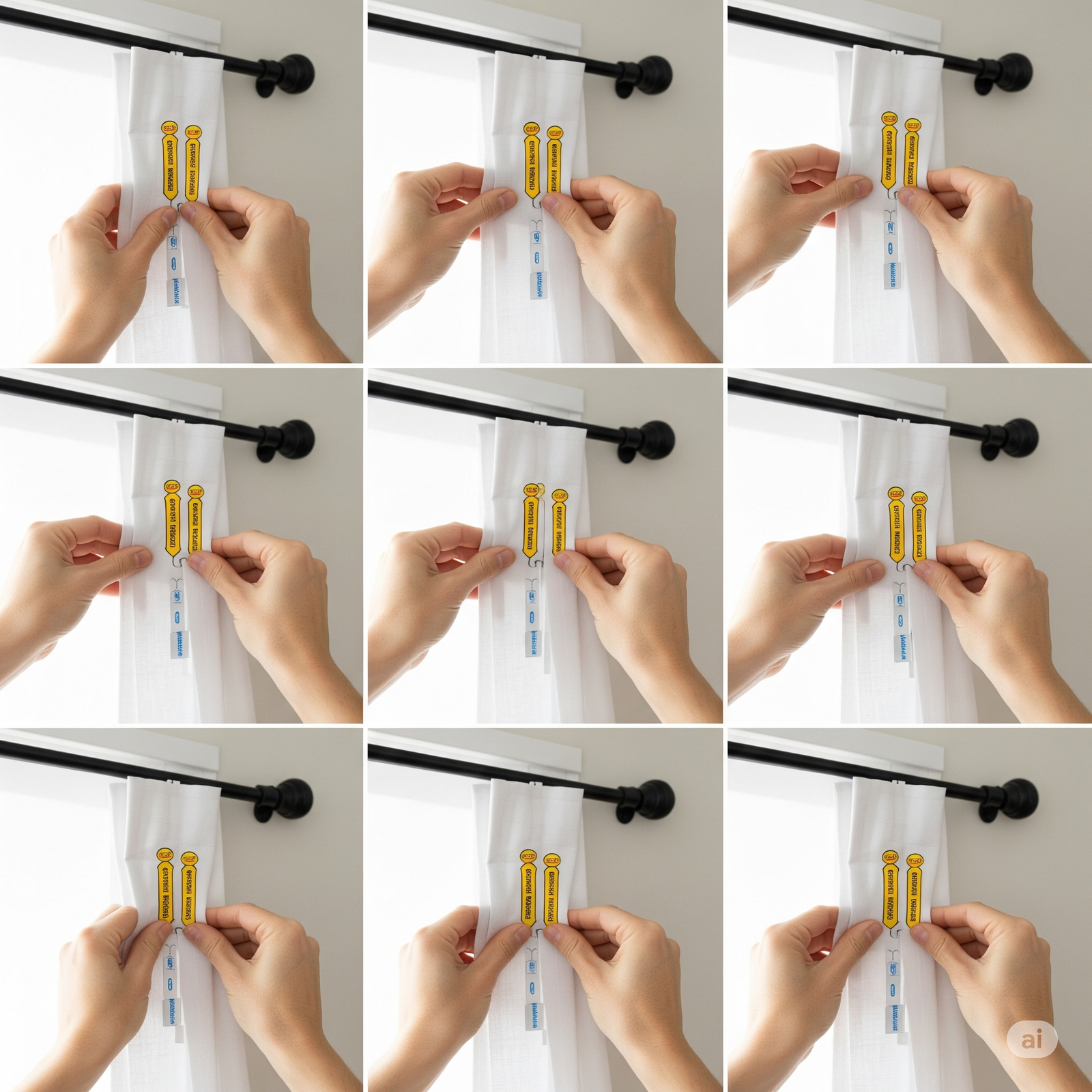
Clamp-On Solutions: The Overlooked Game-Changer
Among the most underutilised no-renter drill curtain solutions are clamp-on systems that attach directly to window frames, moulding, or other structural elements without any permanent modifications. These systems provide excellent stability and support for heavier curtain treatments while remaining completely removable when you move out.
The variety of clamp-on options available has expanded dramatically in recent years, with manufacturers creating specialised designs for different window types and architectural features. I’ve found C-clamps with rubber padding work exceptionally well for thick window frames, while spring-loaded clamps are perfect for thinner moulding or trim work.
One particularly effective technique I’ve developed involves using furniture clamps as temporary curtain rod supports. While this might sound unconventional, furniture clamps provide incredible holding power and can be positioned exactly where you need them without any risk of damage. The key is selecting clamps with protective padding and ensuring they’re tightened appropriately to provide support without creating pressure marks.
For windows with deep frames or unusual configurations, adjustable clamp systems offer unmatched flexibility. I’ve successfully used these systems in apartments with bay windows, arched openings, and other challenging architectural features where traditional rods simply won’t work. The ability to position clamps at custom intervals allows for perfect curtain hanging regardless of window irregularities.
Pressure-Mounted Solutions: Engineering Meets Aesthetics
The evolution of pressure-mounted curtain systems has created some of the most sophisticated no-renter drill curtain solutions available today. These systems use adjustable pressure mechanisms that wedge securely between opposing surfaces, providing rock-solid support without any permanent attachments or modifications.
Modern pressure-mounted systems go far beyond simple tension rods, incorporating sophisticated engineering that allows them to support heavy curtains across wide spans. I’ve successfully used these systems for floor-to-ceiling curtains that completely transform the appearance of standard apartment windows. The key is selecting systems with an adequate pressure adjustment range and ensuring proper installation techniques.
One advanced pressure-mounting technique I’ve mastered involves creating floor-to-ceiling curtain walls that don’t just cover windows but entire wall sections. This approach uses vertical pressure poles that extend from the floor to the ceiling, creating mounting points for horizontal curtain tracks. The result is a dramatic, hotel-like appearance that makes any apartment feel more luxurious and spacious.
The installation process requires careful measurement and adjustment, but the results are remarkable. These systems can support multiple curtain layers, allowing for complex light control and privacy solutions that rival built-in window treatments. When properly installed, pressure-mounted systems are incredibly stable and can remain in place for years without any settling or adjustment needs.
Adhesive Track Systems: The Professional Alternative
For renters who want the smooth operation and professional appearance of traditional curtain tracks without any permanent installation, adhesive track systems represent the pinnacle of no-renter-drill curtain solutions. These systems use industrial-strength adhesives specifically designed for temporary applications, providing excellent holding power while remaining completely removable.
The sophistication of modern adhesive track systems rivals installed alternatives in both appearance and functionality. I’ve used these systems to create smooth-sliding curtain operations that look and feel like built-in window treatments. The tracks can be curved to follow bay windows or other architectural features, creating custom solutions that traditional rods simply can’t match.
Installation of adhesive track systems requires careful surface preparation and precise positioning, but the results are worth the effort. The tracks must be installed on clean, dry surfaces and properly aligned to ensure smooth curtain operation. I’ve found that taking time to properly prepare the installation area and using high-quality adhesives makes the difference between a temporary solution and a long-lasting one.
One of the most impressive aspects of adhesive track systems is their complete removability. When properly installed using the correct adhesives, these systems can be removed without leaving any residue or damage. The tracks peel away cleanly, and any remaining adhesive can be removed with standard cleaning solvents without affecting paint or finish.

Creative Hybrid Approaches: Combining Methods for Maximum Impact
Through extensive experimentation, I’ve discovered that the most effective no-renter drill curtain solutions often involve combining multiple methods to create custom installations that work better than any single approach. These hybrid techniques allow you to leverage the strengths of different systems while compensating for their limitations.
One particularly successful combination I’ve developed involves using tension rods for primary support with Command strip reinforcement at stress points. This approach provides the easy installation of tension rods with the additional security of adhesive support, creating a system that can handle heavier curtains without risk of failure.
Another effective hybrid approach combines magnetic systems with pressure mounting for windows that have both metal frames and suitable pressure points. This redundant support system ensures that even if one method fails, the other will maintain certain security. The combination also allows for more complex curtain arrangements, such as layered treatments or unusual hanging angles.
For challenging windows or heavy curtain treatments, I’ve successfully used combinations of clamp-on supports with adhesive tracks, creating professional-grade installations that rival traditional mounted systems. These hybrid approaches require more planning and installation time, but they provide solutions for situations where single methods would be inadequate.
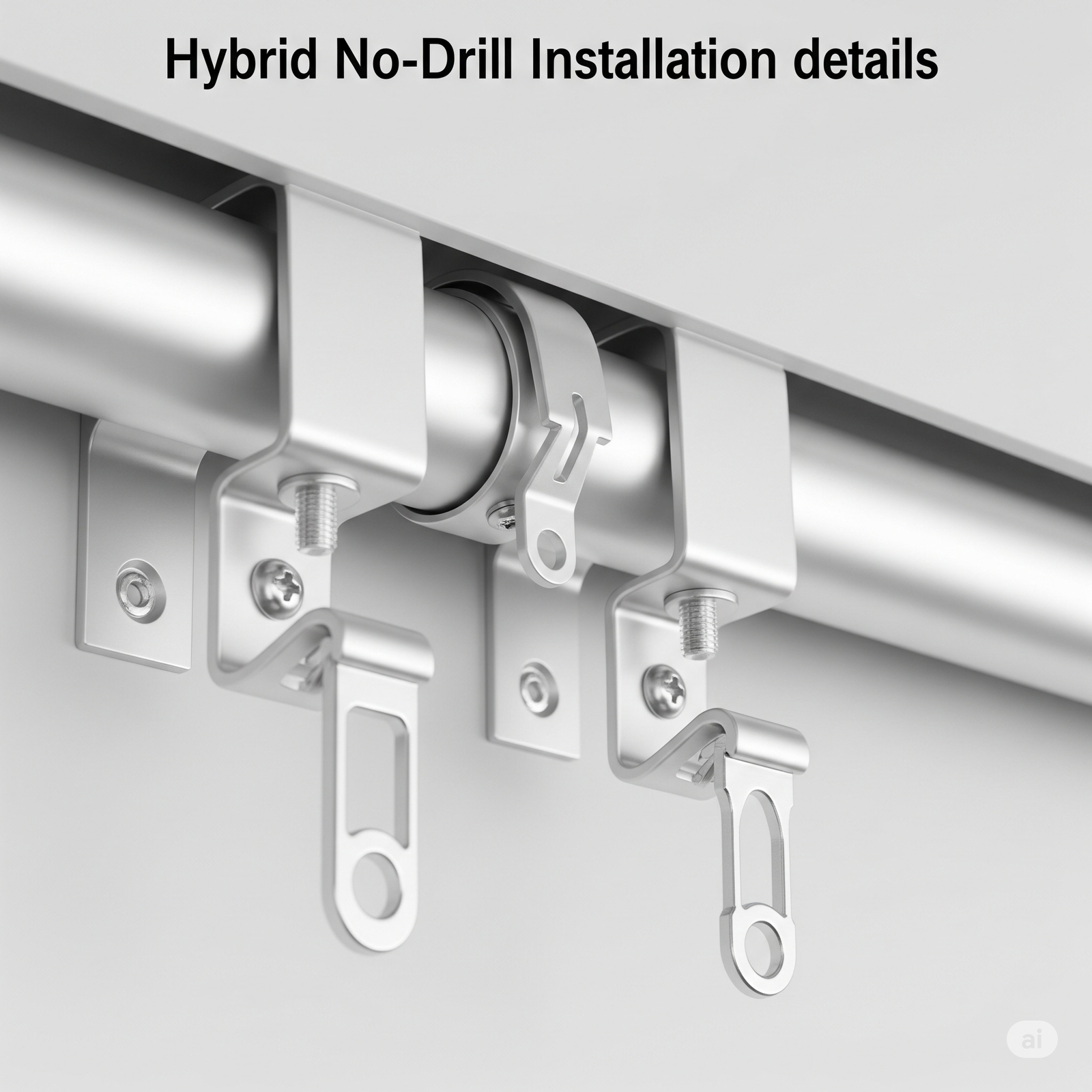
Seasonal Adaptations and Weather Considerations
Living in different climates has taught me that no-renter’s drill curtain solutions need to account for seasonal changes that affect both the mounting systems and the curtains themselves. Temperature fluctuations, humidity changes, and seasonal light variations all impact the performance of damage-free curtain systems.
During summer months, I’ve noticed that tension rods can expand and lose their grip, while adhesive systems may soften in extreme heat. To combat these issues, I’ve developed seasonal adjustment routines that ensure my curtain systems remain secure and functional throughout the year. This includes periodic tension adjustments and cleaning of adhesive surfaces to maintain optimal performance.
Winter presents different challenges, particularly in climates with significant temperature variations. Cold weather can cause materials to contract, potentially loosening connections or causing adhesive failures. I’ve learned to anticipate these changes and make preventive adjustments before problems occur. Additionally, winter’s reduced daylight hours often require different curtain configurations to maximise available natural light.
Humidity variations throughout the year can affect both the mounting systems and the curtains themselves. High humidity can cause adhesive systems to fail, while low humidity can make materials brittle and prone to damage. I’ve found that monitoring environmental conditions and making appropriate adjustments helps maintain system reliability throughout seasonal changes.
Troubleshooting Common Installation Challenges
Through my extensive experience with no-renter drill curtain solutions, I’ve encountered virtually every installation challenge that renters face. Understanding how to troubleshoot these problems quickly and effectively can save both time and money while ensuring your curtain systems remain secure and functional.
One of the most common issues I’ve addressed is insufficient support for heavier curtains. When tension rods bow or adhesive systems fail, the problem is usually inadequate weight distribution or improper installation techniques. I’ve learned to recognise these issues early and implement reinforcement strategies before complete system failure occurs.
Windows with unusual dimensions or architectural features often present unique challenges that require creative solutions. I’ve developed techniques for handling bay windows, corner installations, and windows with minimal frame space that don’t accommodate standard mounting methods. These specialised approaches often involve combining multiple systems or creating custom mounting points using removable hardware.
Another frequent challenge involves curtains that don’t hang properly due to uneven mounting or inadequate support. I’ve found that most hanging issues can be resolved through careful adjustment of mounting points and proper selection of curtain hardware. The key is understanding how different fabrics and weights behave with various mounting systems.
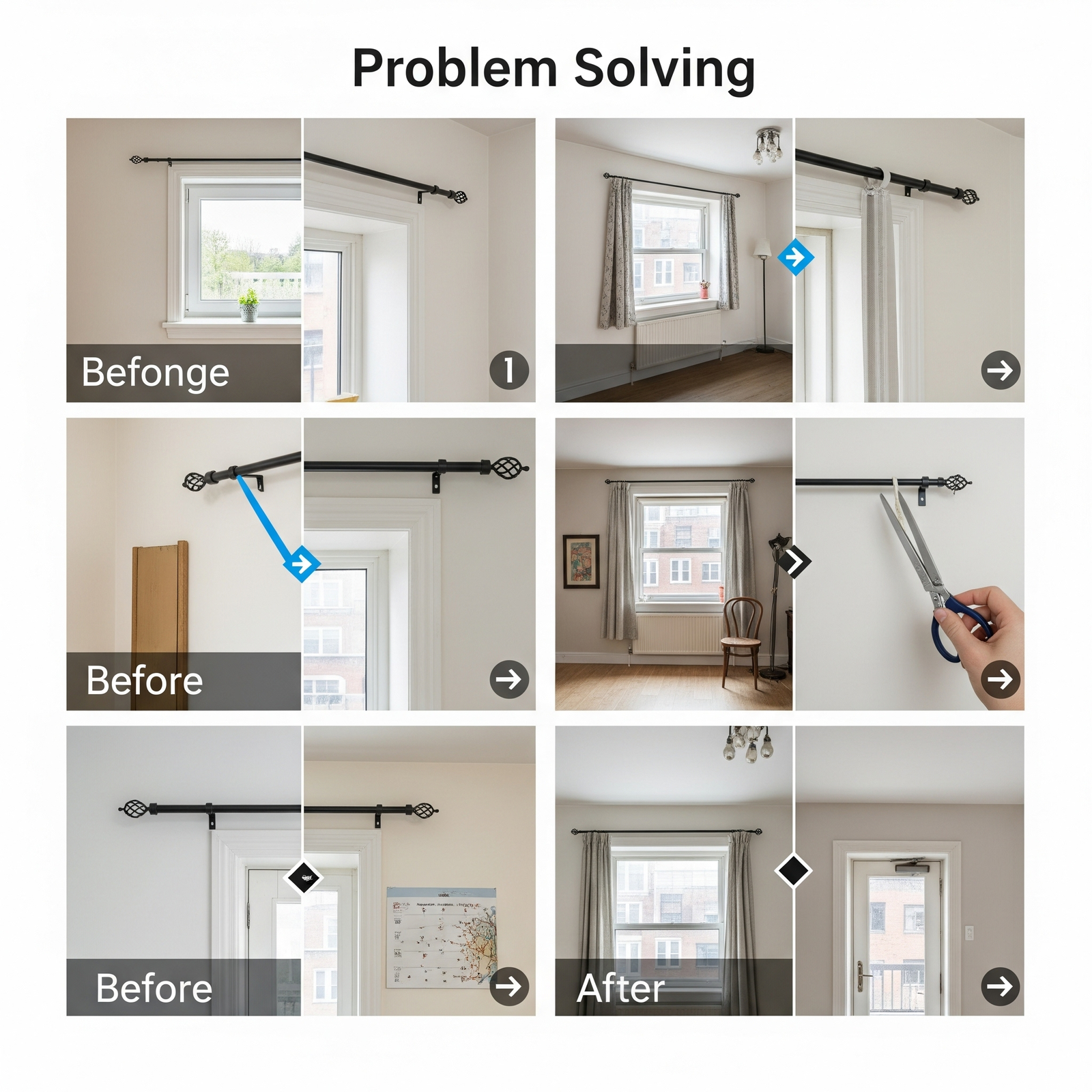
Long-Term Maintenance and Adjustment Strategies
Successful implementation of no-renter drill curtain solutions requires understanding that these systems need periodic maintenance and adjustment to remain effective over time. Unlike permanent installations, damage-free systems require ongoing attention to ensure they continue performing optimally throughout your lease period.
I’ve developed a maintenance routine that includes monthly checks of all mounting points, adjustment of tension systems, and cleaning of adhesive surfaces. This proactive approach prevents small issues from becoming major problems and ensures that my curtain systems remain secure and functional. The time invested in regular maintenance is minimal compared to the potential cost of system failures or damage.
Seasonal adjustments form a crucial part of long-term maintenance strategies. I’ve learned to anticipate when different systems will need attention based on weather patterns and seasonal changes. This predictive approach allows me to make adjustments before problems occur, maintaining consistent performance throughout the year.
Documentation of installation details and adjustment procedures has proven invaluable for troubleshooting and maintenance. I keep records of which systems work best in different locations, optimal adjustment settings, and seasonal modification requirements. This information helps me quickly resolve issues and makes future installations more efficient.
Economic Analysis: Cost-Effectiveness Over Time
When comparing no-renter’s drill curtain solutions to traditional installation methods, the economic advantages extend far beyond avoiding damage fees. The total cost of ownership for damage-free systems often proves lower than conventional approaches when you factor in installation costs, damage potential, and system longevity.
Initial investment in quality damage-free systems typically ranges from $50 to $200 per window, depending on the complexity of the installation and the quality of components chosen. This compares favorably to professional curtain rod installation, which can cost $100 to $300 per window when you include labour, materials, and potential damage risks.
The reusability of damage-free systems provides additional economic benefits for renters who move frequently. Unlike traditional installations that must be abandoned when moving, quality tension rods, clamp-on systems, and adhesive tracks can be removed and reinstalled in new locations. This reusability factor effectively reduces the per-installation cost over time.
When calculating the true cost of different approaches, I factor in the risk of damage fees, which can range from $200 to $500 per room for traditional installations. Even a small probability of damage fees makes damage-free systems economically attractive, while the certainty of avoiding damage makes them essential for cost-conscious renters.
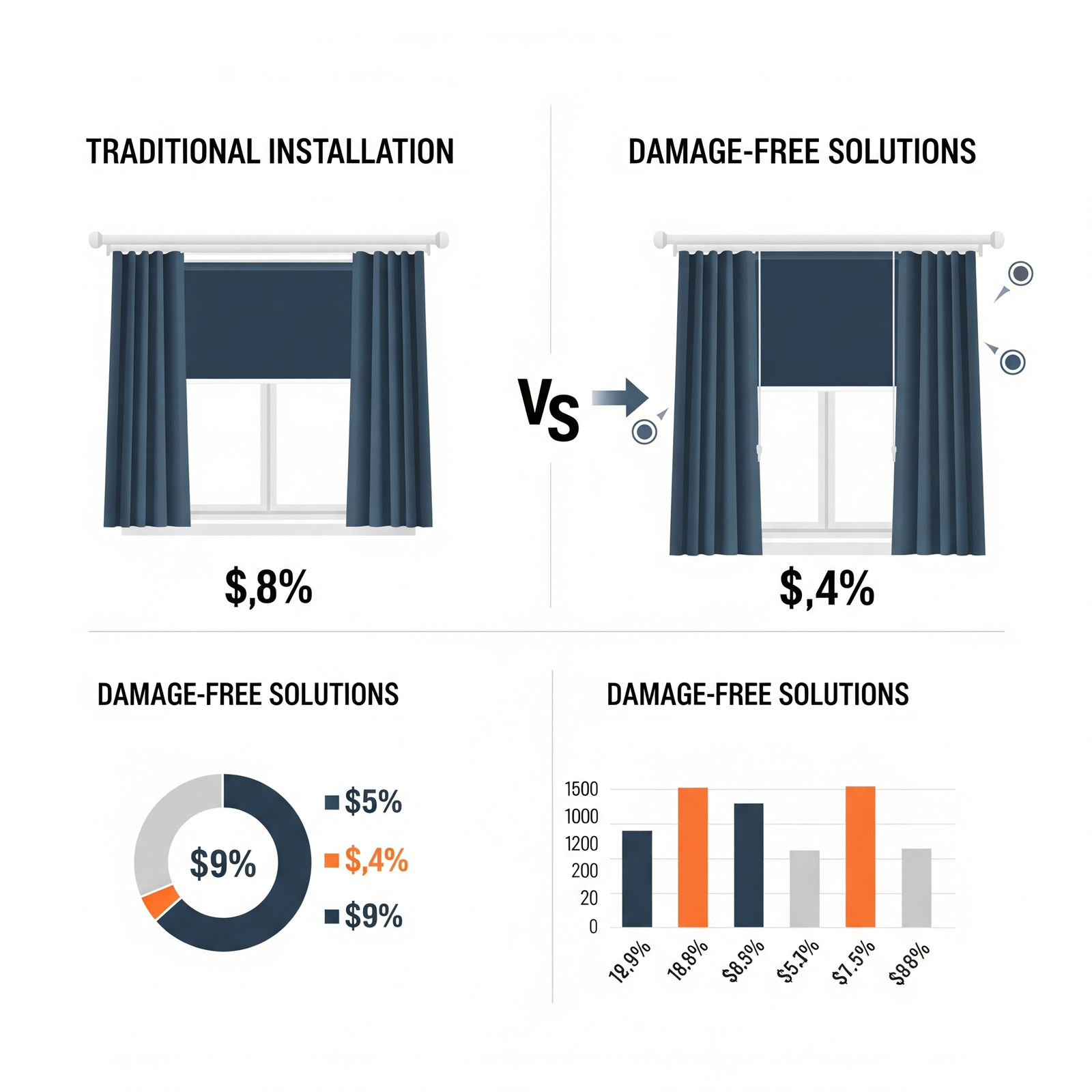
FAQs
Can no-renter's drill curtain solutions support heavy blackout curtains?
Yes, but you need to choose the right system and often combine methods. I've successfully hung heavy blackout curtains using heavy-duty tension rods with Command strip reinforcement, or pressure-mounted systems designed for heavier loads. The key is distributing weight across multiple support points.
How do I ensure my damage-free curtain systems won't fall and break something valuable?
I always test systems with lighter loads before hanging final curtains, and I use redundant support methods for valuable areas. Additionally, I inspect all mounting points monthly and make adjustments as needed to maintain security.
Will adhesive systems damage painted walls when removed?
High-quality removable adhesives designed for temporary use shouldn't damage properly painted walls. However, I always test in an inconspicuous area first and follow the manufacturer's removal instructions carefully. Avoid cheap adhesives that aren't designed for clean removal.
